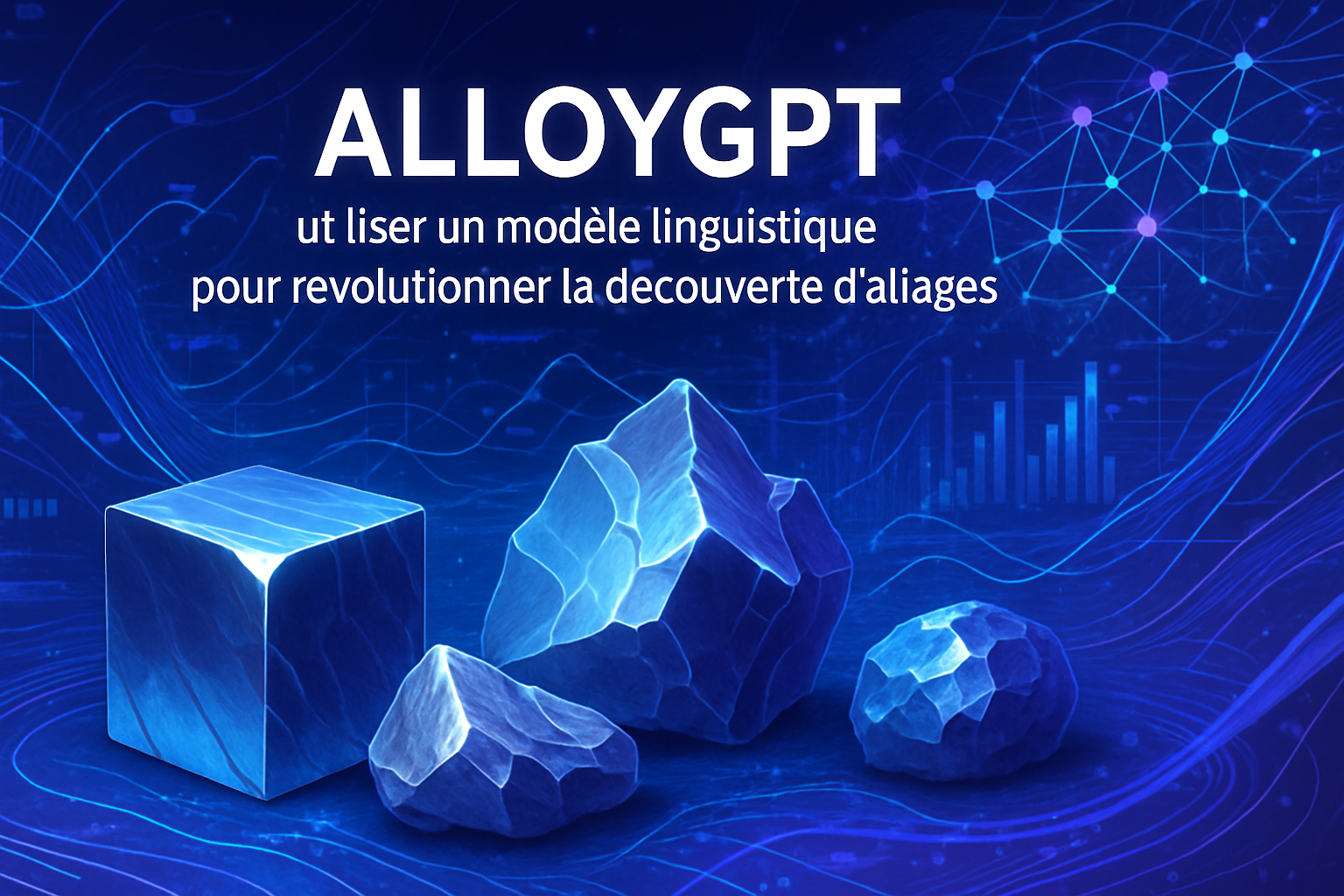AlloyGPT is revolutionizing alloy design with an innovative approach. This language model enables accurate predictions and optimized designs for industrial applications, particularly in aerospace and automotive sectors. A true breakthrough, *the synergy between AI and materials science* opens new perspectives for sustainable development.
The challenge of finding the *ideal combination of elements* for specific properties has long hindered innovation. This is where AlloyGPT stands out with its ability to propose compositions that meet complex performance objectives. Thanks to this model, scientists now have a powerful tool that can reduce the time and costs associated with alloy discovery.
AlloyGPT’s Performance in Design Tasks
The AlloyGPT model distinguishes itself by its ability to assess design accuracy in material transformation tasks. Developed by researchers from Carnegie Mellon University, this model merges the language of models with alloy physics, thereby enabling the creation of new alloy designs for additive manufacturing.
Advancements in Additive Manufacturing
The additive manufacturing of alloys is revolutionizing the creation of mechanical parts designed for various applications, particularly in the aerospace, automotive, and energy sectors. According to research, the optimal combination of elements for these parts is a complex process, traditionally long and delicate.
AlloyGPT: A Dual Model
AlloyGPT features a unique capability with its ability to predict multi-phase structures and properties based on alloy compositions. In parallel, it offers a comprehensive list of compositions that meet specific design objectives. Mohadeseh Taheri-Mousavi, an assistant professor, emphasizes the importance of this innovation in designing alloys with optimal mechanical performance and manufacturability.
A Linguistic Approach to Alloy Physics
The autoregressive model was built by developing a language specific to alloy physics. This strategy allows the model to analyze compositions and structural characteristics more efficiently than traditional methods, which are often limited by their iterative approach.
A Comprehensive List of Elemental Combinations
AlloyGPT facilitates the provision of a list of elemental combinations, overcoming the challenges faced by conventional methods. This feature is particularly valued when designing alloys with gradient compositions, where material properties vary within the same piece. The ability to simultaneously predict and design alloys represents a significant technological leap.
The Synergy of Accuracy, Diversity, and Robustness
Bo Ni, a member of Taheri-Mousavi’s group, reports a synergy between accuracy, diversity, and robustness offered by AlloyGPT to solve complex problems. This innovation optimizes the discovery and design process of alloys, promoting increased efficiency in the development of suitable materials.
Impacts on Alloy Discovery
The methodology developed by the Carnegie Mellon team could redefine alloy research. Rapid discoveries of new alloys with improved properties become possible. This advancement also helps reduce costs and accelerate design processes for industrial partners.
Future Perspectives
The results of the study on AlloyGPT, published in npj Computational Materials, open promising prospects for other similar models. The proposed framework radiates at the intersection of artificial intelligence and materials science, thus stimulating ongoing research in this field. AlloyGPT paves the way for a new era in alloy design.
The availability of the source code and script examples on GitHub underscores the researchers’ commitment to sharing these advancements. This openness will certainly foster a productive exchange of ideas within the scientific community.
Common Frequently Asked Questions
What is AlloyGPT and how does it work?
AlloyGPT is a language model developed to understand the physics of alloys, capable of generating innovative designs for alloys manufacturable by 3D printing. It analyzes the composition, structure, and properties of alloys to predict combinations of elements that meet specific performance criteria.
How does AlloyGPT improve the alloy design process?
AlloyGPT simplifies the process by providing a comprehensive list of element mixtures that can produce desired material properties, thus saving time and reducing design costs in various manufacturing treatments.
What types of applications benefit from the use of AlloyGPT?
Applications of AlloyGPT include the aerospace, automotive, and energy sectors, where components with optimal mechanical properties and advanced manufacturability are essential for performance and reliability.
Can AlloyGPT be used for alloys with gradient compositions?
Yes, AlloyGPT is particularly useful for designing alloys with gradient compositions, allowing for continuous variations in material properties within the same piece, which is crucial for meeting specific requirements in manufacturing.
What are the main differences between AlloyGPT and conventional alloy design methods?
Unlike traditional iterative methods that may struggle to explore all possible solutions, AlloyGPT offers a comprehensive approach by simultaneously predicting multi-phase structures and proposing alloy compositions tailored to the desired design objectives.
How can researchers use AlloyGPT for their projects?
Researchers can rely on AlloyGPT to quickly discover alloys with new enhanced properties, using suitable machine learning tools for deep analysis of complex materials.
Are there resources and examples for using AlloyGPT?
Yes, examples of source code and scripts for training and inference of AlloyGPT are available to help users integrate the model into their own research and development projects related to alloys.






